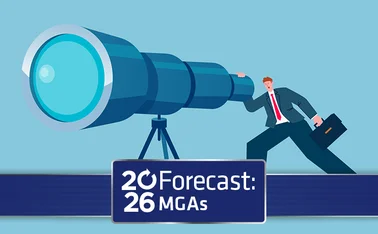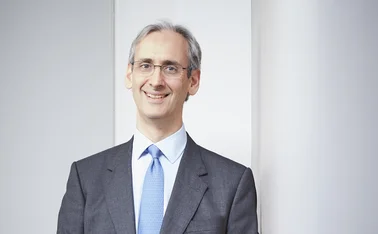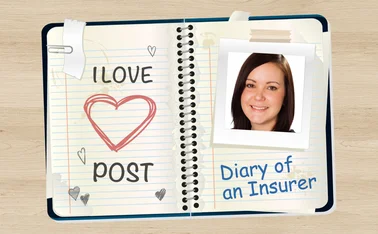
Blog: The four dichotomies of innovation in insurance

Need to know
- Innovators need to overcome responses such as “innovation schminnovation - show me the money” by addressing a number of dichotomies
- It is important innovators should learn to value the commerciality of learnings themselves
- Start-ups make smarter, faster, more data-backed decisions purely because they cannot financially afford to do anything else
- Building proofs of concept and running pilots is generally eased by seeking forgiveness. Going to scale is generally only possible by asking permission
Insurance needs to have more creative ideas, with stronger commercial outcomes, delivered through a better-disciplined approach, argues Dan White, senior partner, Ninety Consulting. And then senior executives might not be so sceptical when it comes to backing insurance innovation within their organisations.

All insurance innovators struggle with a number of common challenges. I see this first hand time and time again.
Whether on projects or in conversations with people trying to change insurance for the better. One FTSE 100 insurance CEO recently said to me “innovation schminnovation - show me the money”.
There are sceptics, then. Who’d have thought it?
I see four recurring dichotomies that lie behind this type of view, and that underpin the common struggles that insurance innovators face: Commerciality versus learnings; Funding versus scarcity; Creativity versus discipline; Permission versus forgiveness. Let me share them here.
Commerciality versus learnings
Which is most valuable in your mind? Is how you answer that a factor of your role in the organisation (do chief financial officers value commerciality, and innovators the learnings)?
How many ‘great’ ideas have yet to be explored, simply because it was impossible to calculate a robust benefits case at its early stages? And how many insurers have lost potential competitive or first-mover advantage, because they couldn’t prove commercial value? All too many.
And yet how much money has been ‘wasted’ on poor ideas, or ideas that never made it to scale, yet which generated useful learnings? Innovators speak of leading indicators and promise transformational future returns if only the organisation will fund the learning process.
Whilst there is a fair method in such apparent risk-taking, we innovators would do better, I feel, to learn to value the commerciality of learnings themselves. Learning has value. As an idea is developed through a lean start-up process, it starts by generating mainly learnings; over time, those learnings allow it to start to generate commercial value; by the time it goes to full market roll-out, the idea is generating very few learnings, but much more commercial value. That evolution needs to be both allowed and encouraged to take place.
Funding versus scarcity
What do you think? Is it better to have plenty of funding for insurance innovation initiatives, or to exist in a position of scarcity?
All innovators will intuitively want more funding, but which drives better decision-making? I’d argue the latter. Part of Ninety’s ‘behave more like a start-up’ mantra speaks to the fact that start-ups - in part - make smarter, faster, more data-backed decisions purely because they cannot financially afford to do anything else.
So scarcity is of value to the innovator. And yet funding is critical to scale an idea that scarcity has helped shape, as many start-up founders will tell us. One needs both to create a truly great idea, and to get it to market.
Creativity versus discipline
As an innovator, if you were allowed only one, which would you choose: creativity or discipline?
Many will argue that innovation is inherently creative, and would go for that. Others would point out that creativity doesn’t deliver something to market. And they’d both be right. Creativity has to be disciplined. Think, for instance, of the power of focusing ideation on prioritised problem statements, versus scatter-gun ‘throw it at the wall and see what sticks’ approaches.
Equally, though, discipline has to be creative: it has to allow for and empower creativity; it has to recognise leading indicators and innovation accounting techniques. Business-as-usual or large waterfall programme discipline is not suitable for creativity or innovation. But neither is unfettered creativity, in the end, you need to be productive at scale.
Permission versus forgiveness
Which do you tend to seek? Which is the right path to choose? In an industry that is risk-averse and - too often - legacy-minded, have innovators like you and I got no choice but to seek forgiveness for breaking the rules?
Perhaps, and I’ve been there myself (once having been formally reported by a junior project manager at one of my old insurer clients for ‘bypassing standard process’). However, is it truly possible to take ideas to market rollout if the organisation is not with you? In my experience, it’s not. Building proofs of concept and running pilots is generally eased by seeking forgiveness. Going to scale is generally only possible by asking permission.
Ultimately, I think, each of these apparent dichotomies turns out not to be a dichotomy at all and evaporates into this truism: different stages of the insurance innovation process require different approaches.
Early on, driven by scarcity, it’s important to be creative, to be willing to ask for forgiveness, and to place a value on learning. As those approaches help the idea evolve, crystallise and have its worth be proven, they cease to be appropriate and actually start to hinder progress.
Now, to be taken to scale successfully, the idea needs serious funding, with a disciplined approach to delivery, sharp commercialism, and a whole-company approach that means no longer stepping on toes (start asking for permission, then).
We’d all do well to learn to recognise the stage at which any idea is currently sitting and to apply the right combination of approaches to help it get to the next appropriate point. Insurance as a whole needs to have more creative ideas, with stronger commercial outcomes, delivered through a better-disciplined approach.
Where those behaviours are in evidence, the FTSE 100 CEO of my opening story will - I hope - start to feel comfortable in funding his company’s innovation efforts.
Only users who have a paid subscription or are part of a corporate subscription are able to print or copy content.
To access these options, along with all other subscription benefits, please contact info@postonline.co.uk or view our subscription options here: https://subscriptions.postonline.co.uk/subscribe
You are currently unable to print this content. Please contact info@postonline.co.uk to find out more.
You are currently unable to copy this content. Please contact info@postonline.co.uk to find out more.
Copyright Infopro Digital Limited. All rights reserved.
As outlined in our terms and conditions, https://www.infopro-digital.com/terms-and-conditions/subscriptions/ (point 2.4), printing is limited to a single copy.
If you would like to purchase additional rights please email info@postonline.co.uk
Copyright Infopro Digital Limited. All rights reserved.
You may share this content using our article tools. As outlined in our terms and conditions, https://www.infopro-digital.com/terms-and-conditions/subscriptions/ (clause 2.4), an Authorised User may only make one copy of the materials for their own personal use. You must also comply with the restrictions in clause 2.5.
If you would like to purchase additional rights please email info@postonline.co.uk









